Beaches in Korea – Best Beaches, Korean Beach Culture, and More!

When people think of South Korea, pristine beaches might not be the first thing that pops into their minds. And honestly, I get it. In a country renowned for its vibrant cities, rich history, and stunning landscapes, the allure of sandy shores might seem like an afterthought. But let me tell you something – South Korea boasts some seriously stunning beaches that are well worth exploring, and they’re a compelling reason to venture beyond the confines of Seoul… and even Busan.
Don’t get me wrong – places like Haeundae Beach in Busan might be on every tourist’s checklist, but in my humble opinion, it’s far from the crown jewel of beaches in Korea. Sure, it’s popular, with its wide stretch of golden sand and bustling promenade, but there’s so much more to discover for those seeking a more serene and breathtaking experience.
Personally, my heart lies with the beaches of the northeast, particularly gems like Yangyang Beach. Nestled amidst rugged cliffs and framed by lush greenery, these northern beaches possess an undeniable charm that can’t be replicated elsewhere. Something is enchanting about the untouched beauty of these shores, where the crashing waves provide a symphony of tranquillity.
But there are a few catches when visiting beaches in South Korea. For example, they tend to get crowded, especially during peak season. And while the energy of a bustling beach can be infectious, sometimes you want to escape the crowds and soak in the beauty of nature without distractions. That’s why I always recommend venturing away from the city centres to uncover the hidden treasures that lie beyond. In this article, I want to give you an exhaustive guide to beaches in South Korea and how to get the best experiences from them.
So, if you’re ready to trade the hustle and bustle of the city for the soothing rhythm of the waves, join me as we embark on a journey to uncover the best beaches that South Korea has to offer. Each destination promises unique charm and beauty, from hidden coves to expansive shores. So grab your sunscreen, pack your sense of adventure, and dive into a coastal paradise waiting to be explored. Welcome to the ultimate guide to the best beaches in South Korea.
This article contains affiliate links. Affiliate links provide me with a percentage of purchases made from links on this page. This comes at no extra cost to you – for more information, please refer to my affiliate disclaimer.
Regional Differences Between Beaches in Korea

As you explore Korea’s beaches, you might be surprised by how much they differ depending on their geography. From the East Coast’s peaceful shores to the South’s charming islands and the bustling beaches of the West, there’s a variety of beach experiences to discover. Let’s see what makes each of these areas special.
East Coast Beaches:
- Description: The east coast of South Korea is known for its stunning scenery and extensive sandy beaches.
- Highlights: Offers great swimming beaches with clear waters and soft sand.
- Popular Destinations: Gangneung, Sokcho, Yangyang Beach.
- Activities: Swimming, sunbathing, beach volleyball, water sports.
- Natural Attractions: Seoraksan National Park, coastal cliffs, scenic hiking trails.
The east coast beaches, particularly Gangneung, Sokcho, and Yangyang, have vast stretches of sand and clear waters, making them ideal for swimming. Gangneung is renowned for its long coastline and relaxing vibe, which are perfect for escaping the busy city life. Sokcho offers dramatic cliffs and stunning views near Seoraksan National Park, attracting both swimmers and hikers. Yangyang is quieter, with a laid-back atmosphere, and is great for those seeking a peaceful retreat. The downside is that these beaches can get pretty crowded during peak summer months, and accommodation prices tend to soar.
South Coast Beaches:
- Description: The southern region of South Korea boasts numerous islands and picturesque coastal landscapes.
- Highlights: Ideal for island hopping and exploring secluded coves and pristine beaches.
- Popular Destinations: Jeju Island, Geoje Island, Hallyeohaesang National Marine Park.
- Activities: Island hopping cruises, snorkelling, diving, exploring volcanic landscapes.
- Cultural Attractions: Jeju’s UNESCO World Heritage Sites, traditional villages, and seafood markets.
The southern region’s big draw is island hopping, with Jeju and Geoje being top destinations. Jeju Island boasts unique volcanic landscapes, waterfalls, and the iconic Hallasan Mountain. Plus, it’s known for its distinct local culture and UNESCO World Heritage Sites. Geoje Island is excellent for exploring the underwater world, with turquoise waters perfect for diving and snorkelling. However, some of the best beaches here are on the smaller islands, which can require a ferry or boat ride. This extra step, combined with the travel expense, might not suit every budget or schedule.
West Coast Beaches:
- Description: The west coast of South Korea is dotted with vibrant coastal cities and bustling beaches.
- Highlights: Offers a mix of urban beach experiences and natural scenery.
- Popular Destinations: Incheon, Daecheon Beach, Taeanhaean National Park.
- Activities: Beach festivals, water sports, exploring coastal cities and cultural attractions.
- Cultural Attractions: Incheon’s historic sites, temples, and traditional markets.
The western coast stands out for its lively festivals like the Boryeong Mud Festival, where you can join a joyful crowd playing in the mud. Incheon and Daecheon beaches also have bustling seaside communities and plenty of activities like parasailing and jet skiing. For a more serene setting, Taeanhaean National Park provides a rugged, pristine coastline that contrasts nicely with the city’s bustle. That said, the tidal flats and mudflats characteristic of this coast mean swimming isn’t always ideal, and some beaches here are less picturesque compared to the eastern or southern coasts. Despite the downsides, the diversity across the eastern, southern, and western shores means there’s always a perfect spot waiting for you somewhere along South Korea’s varied coastline!
In my experience, South Korea’s beaches each have their own special highlights, but there are a few challenges to keep in mind as well.
Korean Beach Culture
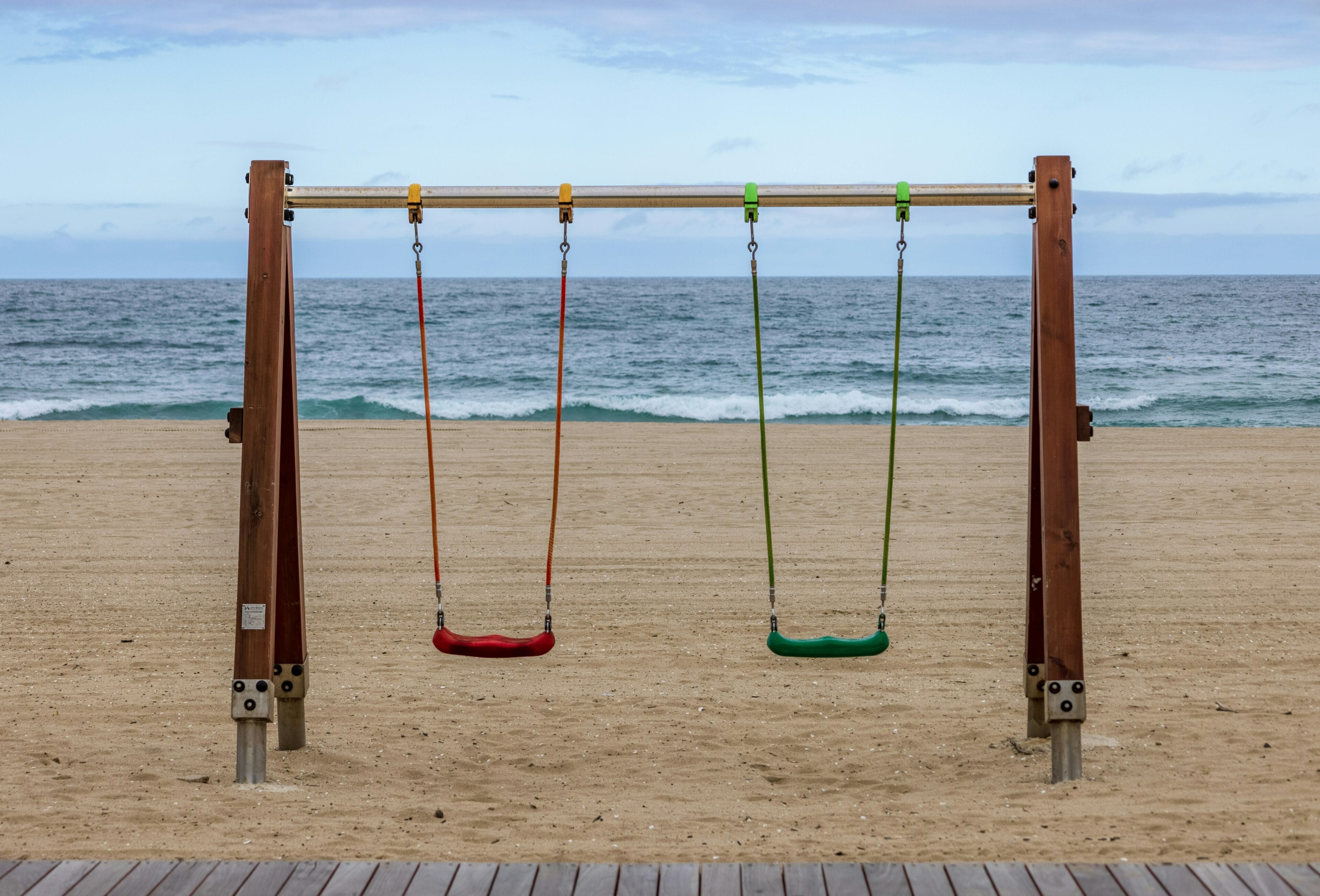
Beach culture in South Korea is a lively blend of traditions, festivals, and community activities that makes every visit unique. South Korean beaches are special year-round, from catching the first sunrise of the year on the eastern beaches to enjoying summer festivals on the western coast.
One of my favourite traditions is gathering on the eastern beaches for the first sunrise of the year. Even in the cold of winter, people come together to celebrate new beginnings as the sun rises over the horizon. In summer, families and friends set up tents for overnight camping or picnic under colourful parasols, creating a lively, communal atmosphere. Festivals like the Boryeong Mud Festival and various seafood celebrations draw crowds eager to play games, listen to music, and enjoy local delicacies.
Some aspects of Korean beach culture surprised me. Private beaches often require an entrance fee, but their cleaner facilities and more controlled crowds create a relaxed vibe. Strictly enforced swimming zones are another distinctive feature, with lifeguards ensuring everyone stays within safe areas. While this can be frustrating for strong swimmers, it makes sense, given the summer crowds.
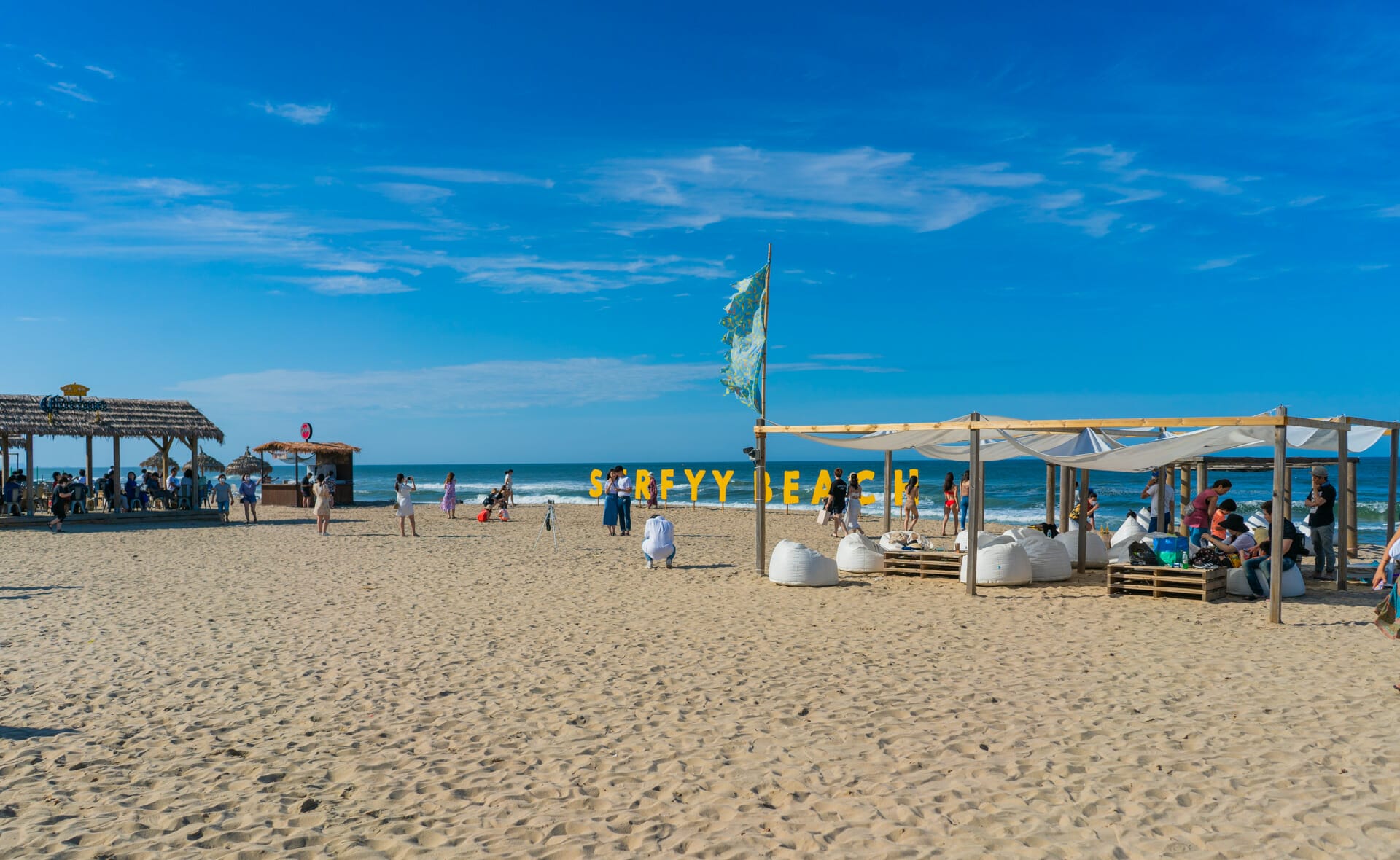
Surfyy Beach is an example of a private beach.
Camping on the beach is popular, with many setting up tents to enjoy late-night snacks or morning coffee together by the waves. Eco-friendly initiatives like plastic-free zones and regular beach clean-ups are also gaining momentum.
Korean beaches offer unique food experiences centred around freshly caught seafood like grilled clams and sashimi. Some coastal regions specialize in grilled shellfish or unique sashimi dishes, drawing food lovers from all over. Surfing is also gaining popularity, with surf schools and rental shops sprouting up, especially in Yangyang and Busan.
The western coastline stands out for its extensive tidal flats. Around Incheon, mudflat tours and clamming during low tide reveal the region’s rich ecology and traditional fishing practices.
Ultimately, Korean beach culture thrives on energy and community. Whether you’re sharing a meal, playing in the surf, or waiting for the sunrise, each trip is filled with traditions and activities that keep me coming back.
Best Seasons to Visit South Korean Beaches
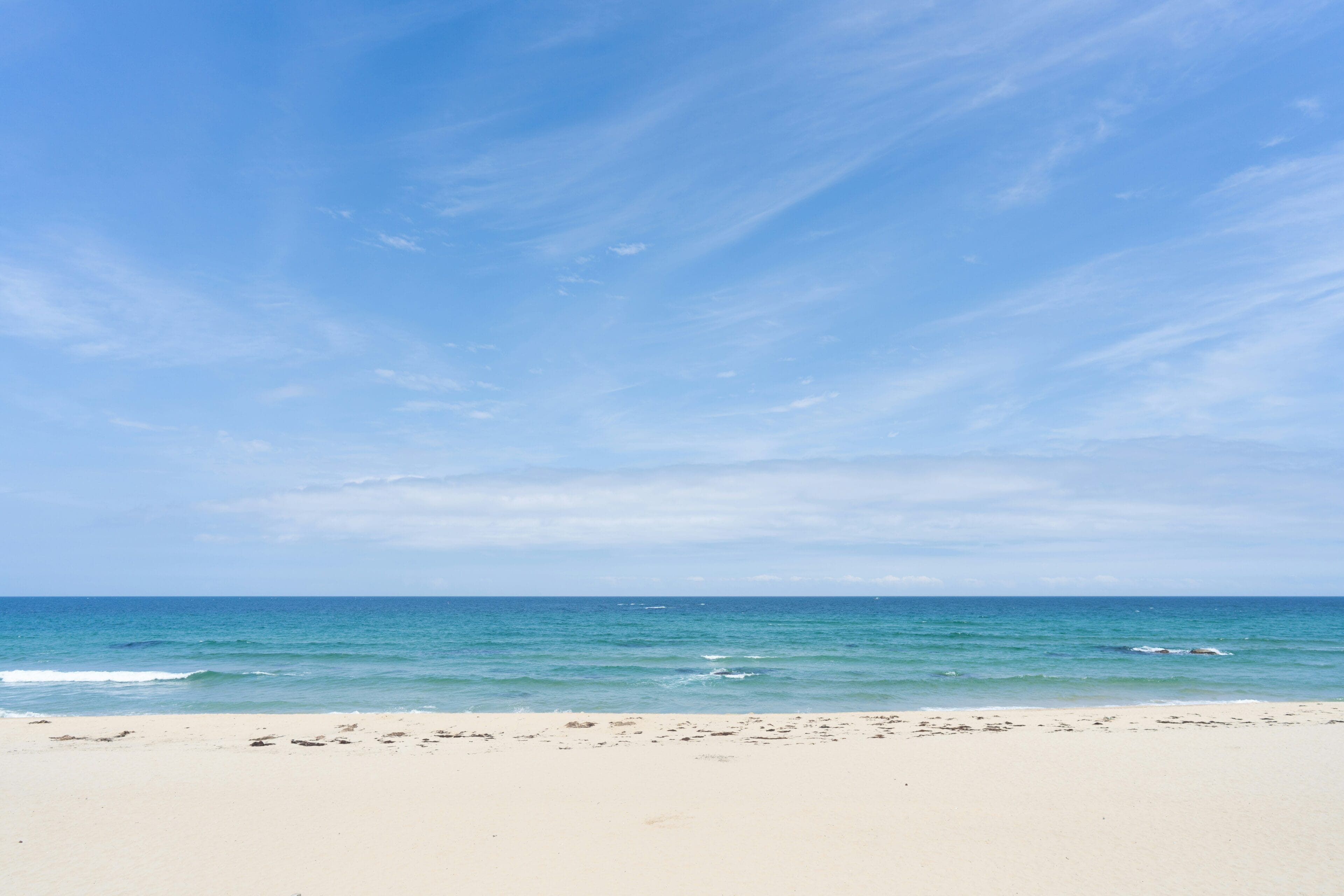
- Spring (March to May): Milder weather and fewer crowds; ideal for enjoying the coastal flora and gentle sea breezes.
- Summer (June to August): Warmest waters and peak beach season; great for swimming, water sports, and festivals.
- Fall (September to November): Less crowded and picturesque; perfect for enjoying the changing colours and pleasant temperatures.
- Winter (December to February): Ideal for photography with stunning sunsets; beaches are quiet, offering a peaceful experience.
Spring
Spring is a delightful time to visit South Korean beaches. The weather starts to warm up, but the summer crowds haven’t yet arrived, making it a perfect season for those looking to enjoy a more tranquil beach experience. The coastal flora begins to bloom, adding a touch of beauty to the scenic landscapes. Gentle sea breezes make long walks along the shore particularly enjoyable. It’s a great time for beachcombing and exploring coastal trails.
Summer
Summer is undoubtedly the peak season for visiting beaches in South Korea. The water is warmest during these months, making it ideal for swimming and a variety of water sports. Beaches come alive with people and activities, including vibrant festivals like the Boryeong Mud Festival. However, with the popularity comes larger crowds, so expect the beaches to be quite busy. It’s the best time to experience the full vibrancy of Korean beach culture, though finding a quiet spot can be challenging.
Fall
Fall brings a serene beauty to South Korean beaches, with changing leaves and cooler but still pleasant temperatures. The crowds diminish, allowing for a more relaxed atmosphere. This season is perfect for those who enjoy peaceful beach walks and the stunning backdrop of autumnal colours. It’s also a great time for photography, capturing the contrast between the vivid fall foliage and the calm blue sea.
Winter
Winter might be cold, but it offers unique opportunities for beachgoers, especially photographers like myself, who love capturing the quiet solitude and dramatic sunsets. The beaches are largely empty, and the low winter light creates stunning visual contrasts that are not present during other seasons. While it’s too cold for swimming, the stark beauty of the landscape offers a different kind of beach experience that’s peaceful and introspective.

Winter brings about a unique feeling to Korean beaches.
Each season brings its own charm and opportunities for different beach activities. Whether it’s the lively festivals of summer or the tranquil beauty of winter, South Korean beaches have something to offer year-round.
East Coast Beaches

Sokcho Beach
The beaches along South Korea’s eastern coast are some of the country’s most spectacular, known for their clear waters, expansive sandy stretches, and dramatic natural landscapes. Facing the East Sea, they offer picturesque sunrises and a more relaxed vibe than their southern and western counterparts. The eastern coastline is ideal for swimming and surfing in summer, hiking and coastal exploration in spring and fall, and serene walks in winter.
Best East Coast Beaches
Gangneung: With its expansive sandy shorelines, Gangneung Beach is perfect for sunbathing and water sports. The nearby Anmok Coffee Street is famous for its unique cafes where visitors can relax after a day at the beach.
Sokcho: Famous for its proximity to Seoraksan National Park, Sokcho Beach offers not just stunning ocean views but also dramatic cliffs and hiking trails. Fresh seafood and Sokcho’s lively night market add to its allure.
Yangyang: Known for its surfing scene, Yangyang Beach attracts both local and international surfers. The laid-back vibe and local cafes make it a favourite for those seeking a quieter, bohemian-style beach.
Gyeongpo: Near the beautiful Gyeongpo Lake, this beach is popular for its summer festival and fireworks, as well as its pine tree-lined trails.

Gangneung Beach
Gangneung
Gangneung is a fantastic destination that perfectly combines beautiful beaches and a rich cultural scene. Its sandy shorelines stretch for miles, making it ideal for long walks and relaxation. I love visiting Anmok Coffee Street afterward, where quirky cafes line the promenade with views of the water. Whether you want to take in the ocean breeze while sipping a latte or dive into water sports, Gangneung Beach offers something for everyone. The nearby lake and pine forests add to the region’s natural beauty, and the summer festivals create an infectious, lively atmosphere. It’s well worth the trip.
Sokcho
Sokcho is easily one of the most convenient beaches to visit on the East Coast. Just a two-hour bus ride from Seoul, it’s the perfect quick getaway. What sets Sokcho apart is the stunning juxtaposition of ocean and mountains, with Seoraksan National Park right in the background. The beaches are wide and clean, and there are plenty of fresh seafood stalls, street food vendors, and a night market to explore after sunset. It’s a versatile beach that lets you soak up nature, enjoy local food, or even head out for a scenic hike, all within a short distance.
Yangyang
Yangyang is my personal favourite beach on the East Coast. It’s nestled between Gangneung and Sokcho but remains much less crowded, giving it a more relaxed vibe. The waves are consistently good for surfing, and there’s a laid-back surfing culture that permeates the area, with plenty of surf shops and laid-back cafes to enjoy. Although it’s a bit more remote and harder to reach, the tranquillity makes up for it. The local cafes are perfect for chilling out with like-minded travelers, and the annual surf festival adds an extra layer of excitement. It’s the kind of beach you head to when you want a quieter, more immersive experience.
Gyeongpo
Gyeongpo Beach is known for its unique setting, bordered by both the sea and Gyeongpo Lake. The sandy beach is wide and clean, with pine trees providing plenty of shaded spots for relaxing. The summer fireworks festival lights up the sky, creating a magical atmosphere. I also love the scenic trails that wind through the pine forest and around the lake. The beach’s proximity to Gangneung means it’s easy to explore both places in one trip, offering a combination of beach relaxation and cultural sightseeing.
Each of these beaches is special in its own way, and all are worth a visit. Whether you’re after surfing, hiking, or just a quiet retreat, the East Coast has you covered.
Unique Festivals and Activities
Gangneung Danoje Festival: A UNESCO-listed celebration with centuries-old traditions, this festival is held in June and offers traditional performances, food, and crafts.
Yangyang Surfing Festival: This summer festival brings together surfers and music enthusiasts, combining exciting surf competitions with beachside concerts.
Sunrise Festivals: Multiple beaches on the East Coast, including Sokcho and Gyeongpo, host sunrise festivals to greet the first day of the new year. These events attract locals and tourists alike, offering music, games, and traditional rituals.
The East Coast is a beach lover’s haven with activities ranging from surfing and hiking to simply watching the sunrise over the sea. Whether you come for the festivals, the waves, or the tranquillity, this region has something special for everyone.
South Coast Beaches
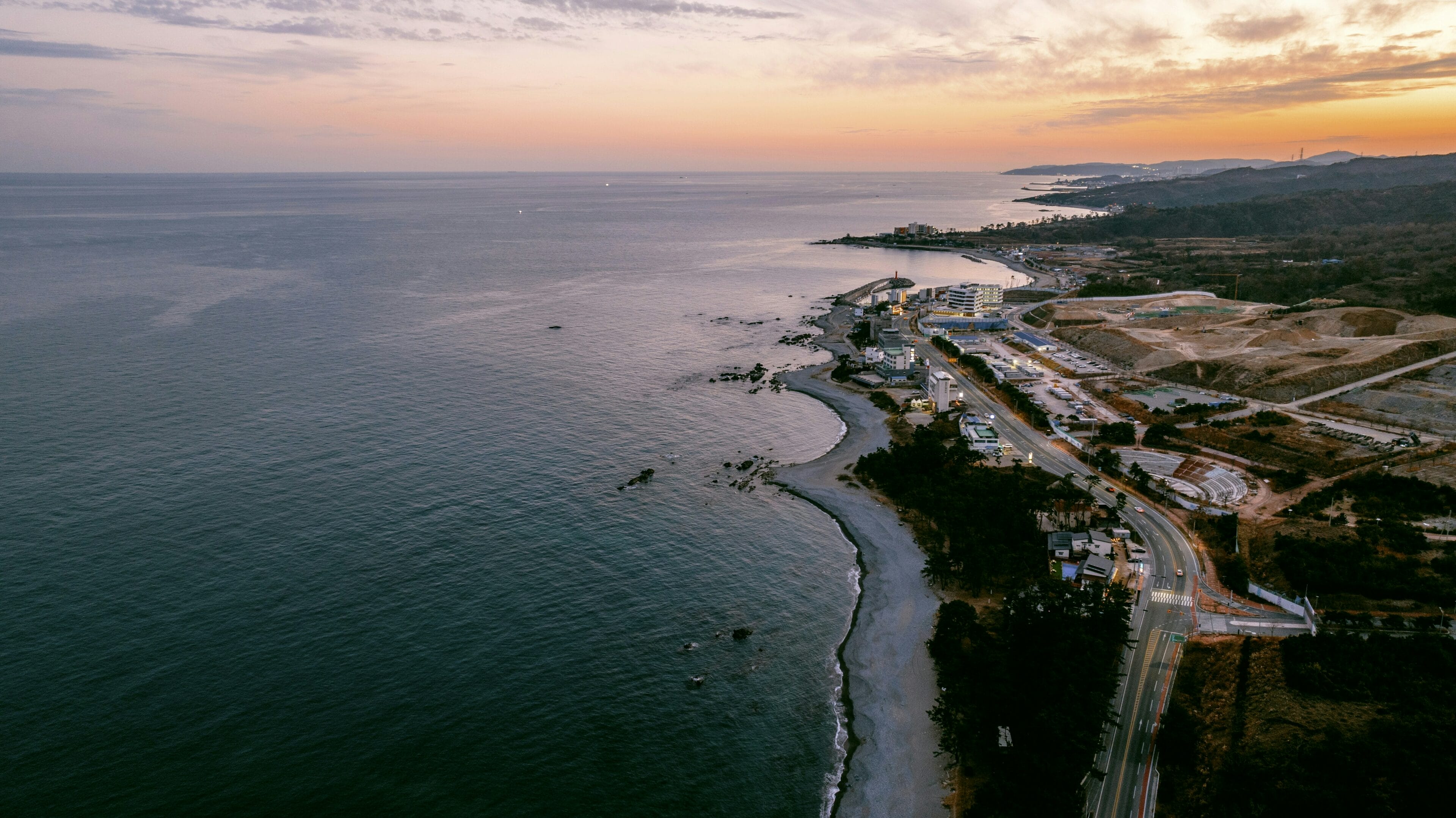
Sacheon has an immense coastline and many beaches!
The southern coast of South Korea is known for its diverse island landscapes, warm climate, and incredible variety of beaches. From the volcanic beauty of Jeju to the emerald waters of Geoje, these beaches offer an escape into nature’s wonders and a more tropical vibe.
Best South Coast Beaches
Jeju Island (Hyeopjae Beach, Hamdeok Beach): Pristine white-sand beaches meet crystal-clear water against the backdrop of volcanic landscapes. Hyeopjae and Hamdeok are among the island’s most popular beaches for snorkelling and sunset photography.
Geoje Island (Hakdong Mongdol Beach, Gujora Beach): Offers unique black pebble beaches, along with smaller sandy coves. Hakdong Mongdol is known for its clear water, while Gujora is great for families.
Namhae (Sangju Silver Sand Beach, Songjeong Beach): These beaches are famous for their soft, silver-like sand and lush surrounding forests, making them ideal for quiet, scenic relaxation.
Busan (Haeundae Beach, Gwangalli Beach): Busan’s vibrant beaches attract visitors with their lively atmosphere, water sports, and great nightlife. Haeundae and Gwangalli are ideal for those who want a mix of beach relaxation and city excitement.

Udo Island
Jeju Island (Hyeopjae Beach, Hamdeok Beach, Udo Island)
Jeju Island is a treasure trove of natural beauty, and its beaches are no exception. Hyeopjae Beach stands out for its pristine white sands and stunning views of the offshore island of Biyangdo. The clarity of the water here is breathtaking, making it perfect for snorkelling or simply relaxing on the shore. Hamdeok Beach is equally beautiful, with its turquoise waters contrasting against the volcanic landscape and nearby cliffs. My favourite discovery was Udo Island, just off the eastern coast of Jeju. The beaches on Udo have the clearest waters I’ve seen, offering an idyllic retreat with unique attractions like black lava rock formations and peanut ice cream. The combination of volcanic terrain and clear, tropical-like water makes Jeju’s beaches truly special.
Geoje Island (Hakdong Mongdol Beach, Gujora Beach)
Geoje Island offers a different beach experience with its distinctive black pebble shorelines at Hakdong Mongdol Beach. While the pebbles make the beach less comfortable for sunbathing, the clear waters and unique terrain give it an otherworldly charm. I enjoyed Gujora Beach more for its sandy coves and gentle waves, which make it a family-friendly destination. The calm waters are perfect for kayaking or beach games, and the nearby national marine park provides excellent opportunities for snorkelling and diving. Geoje’s beaches might not be as famous as Jeju’s, but they’re equally beautiful and offer a quieter, laid-back atmosphere.
Namhae (Sangju Silver Sand Beach, Songjeong Beach)
Namhae is often overlooked but contains hidden gems like Sangju Silver Sand Beach, renowned for its incredibly soft sand that feels like silk beneath your feet. The beach is framed by lush pine forests, giving it a secluded and peaceful vibe. Songjeong Beach is another great option, perfect for scenic relaxation or gentle swimming due to its shallow waters. I loved Namhae for its quiet atmosphere and scenic beauty, which make it an ideal place to unwind.
Busan (Haeundae Beach, Gwangalli Beach)
Busan’s two most popular beaches, Haeundae and Gwangalli, are often packed due to their proximity to the city. Haeundae, with its lively atmosphere, is well-known for its summer festivals and beachfront nightlife, but I found it crowded and not as clean as I expected. The same goes for Gwangalli Beach, which is famous for its view of the Gwangan Bridge. While they both offer plenty of activities and entertainment, the noise and crowds took away from the experience for me. If you’re looking for a lively urban beach scene, these two are great, but if tranquillity is what you seek, I’d suggest exploring other beaches.
Mokpo and Samcheonpo
The coastal towns of Mokpo and Samcheonpo also provide fantastic beaches with island excursions via ferries. The beaches around Mokpo are less crowded and perfect for quiet walks, while the ferries take you to beautiful islands that are ideal for swimming or photography. Samcheonpo has stunning views of the harbour and surrounding mountains, and the island-hopping experience lets you see a different side of the South Coast. These areas might not be as famous as others, but their scenic tranquillity and natural beauty make them well worth visiting.
The western coast of South Korea is a blend of coastal cities, serene islands, and vibrant beach festivals. Facing the Yellow Sea, the region is known for its vast tidal flats, unique mud festivals, and convenient access to beaches near Seoul and Incheon.
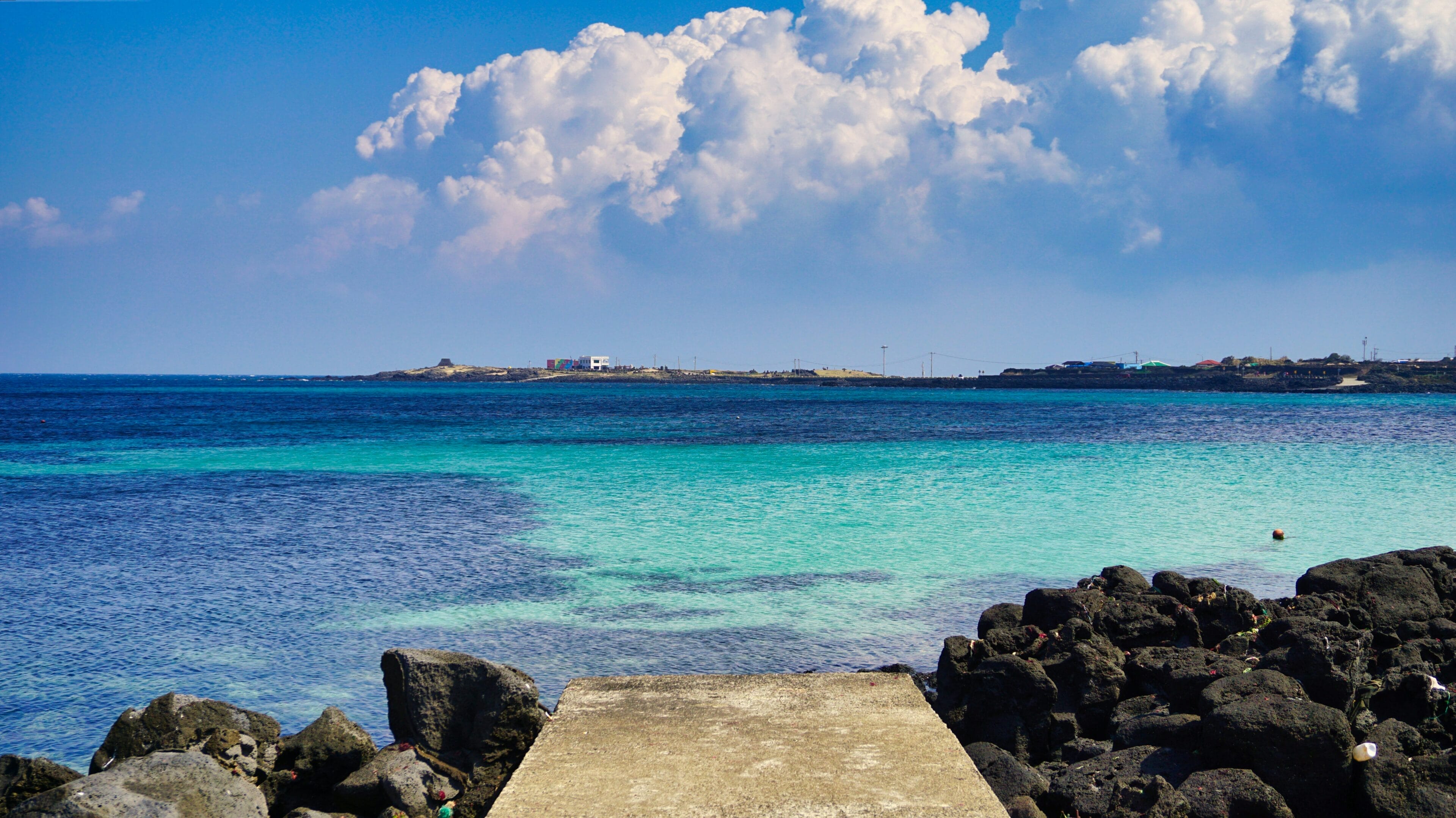
Unique Festivals and Activities
Jeju Fire Festival: An ancient tradition turned modern spectacle, this event in early March features huge bonfires and cultural performances.
Geoje International Art Festival: This fall event showcases contemporary art with outdoor exhibitions and installations along the beaches.
Busan International Film Festival: Held in October, this internationally recognized event offers screenings and activities near the beaches.
The South Coast is a tropical paradise with beaches that offer diverse experiences, from volcanic island adventures to pebble beaches and cultural festivals. Whether you’re after watersports, family-friendly relaxation, or artistic inspiration, these southern beaches are waiting to be discovered.
West Coast Beaches
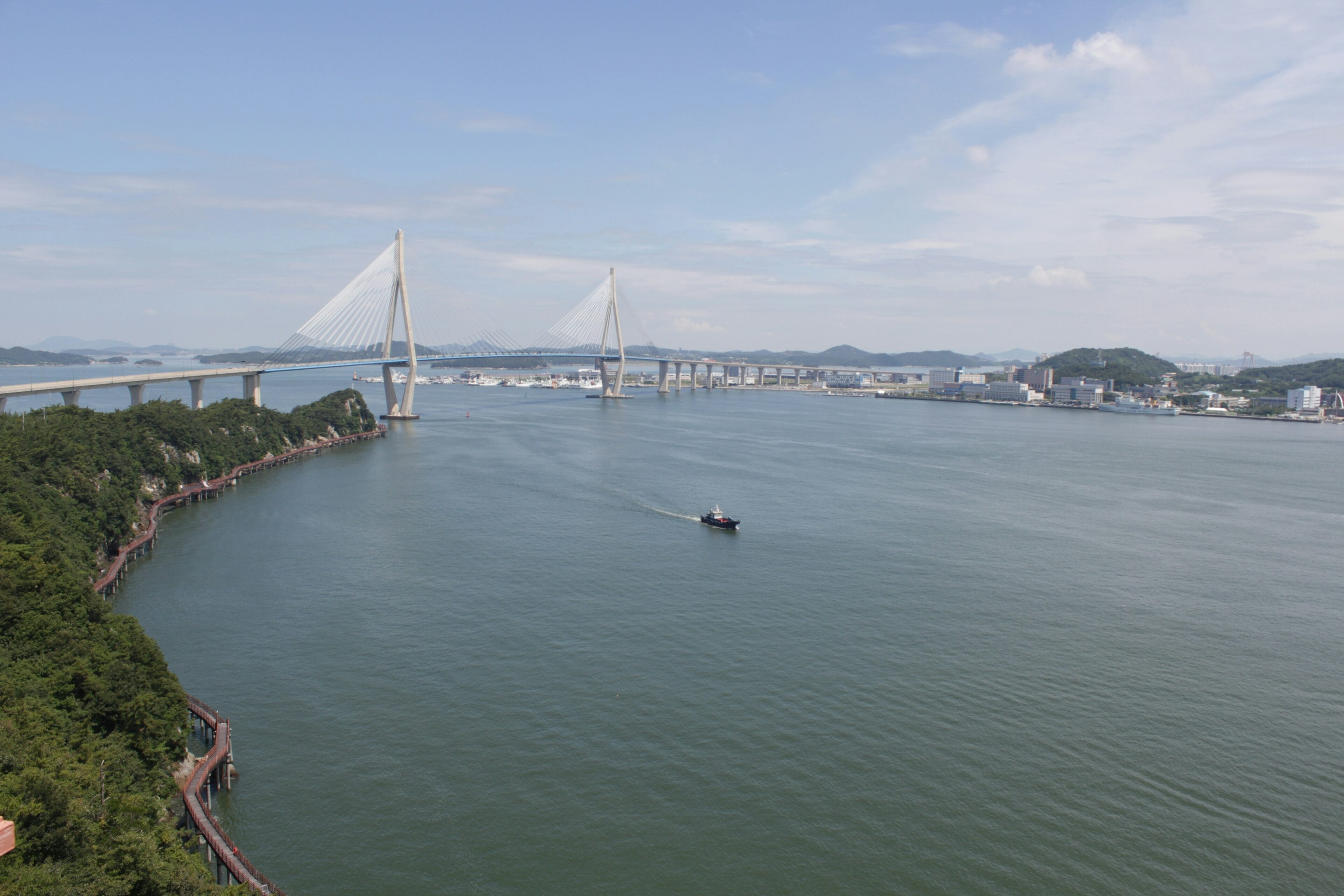
Cities like Mokpo have many nearby beaches.
The western coast provides a mix of convenient urban beaches, cultural festivals, and island adventures, all within reach of the Seoul metropolitan area. Whether you’re looking for relaxation, festival fun, or exploring tidal flats, the region is full of exciting experiences.
Best West Coast Beaches
Daecheon Beach: The most famous beach on the western coast, known for its soft sand, calm waters, and the Boryeong Mud Festival, which draws thousands for a fun, muddy experience.
Eurwangni Beach: Close to Incheon International Airport, this family-friendly beach offers gentle tides, a variety of seafood restaurants, and beautiful sunsets.
Seonyudo Island: Part of a stunning archipelago, this island is renowned for its scenic beauty, relaxed beaches, and bike-friendly terrain.
Muuido Island (Hanagae Beach, Silmi Beach): Known for its tidal flats, seafood restaurants, and convenient ferry access, the island’s beaches offer a tranquil escape close to Seoul.
Daecheon Beach
Daecheon Beach is perhaps the most popular destination on the western coast, and it’s easy to see why. The soft, expansive sands are ideal for beach games and strolling. However, I don’t find it as great for swimming since the sand is muddier compared to other regions. Despite that, Daecheon hosts the famous Boryeong Mud Festival each summer, which is a uniquely entertaining event. You can join thousands of festival-goers in mud wrestling, obstacle courses, and body painting. Even if you’re not the muddy type, it’s worth visiting for the lively atmosphere and unforgettable experience.
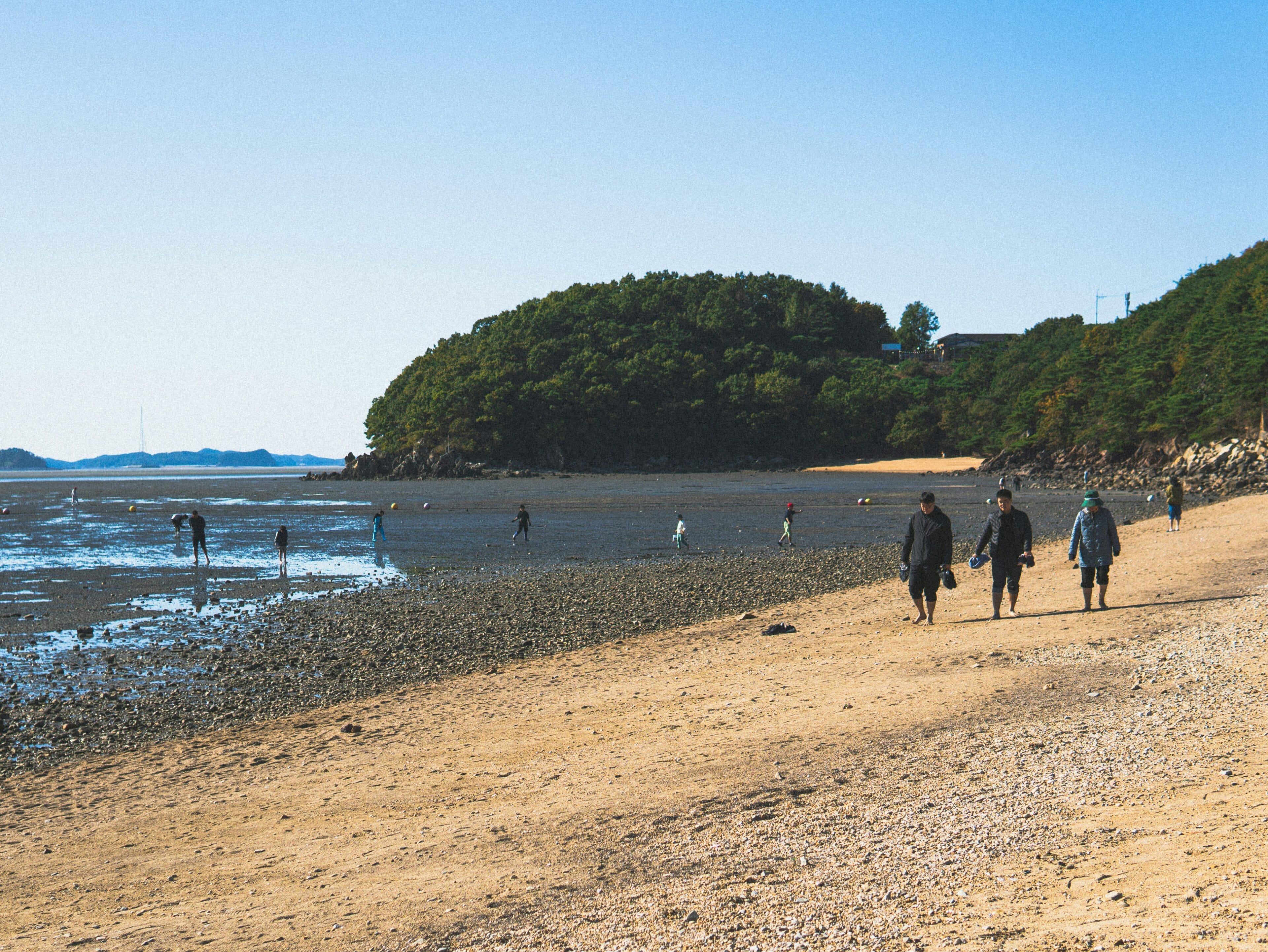
Eurwangni Beach
Eurwangni Beach is conveniently located near Incheon International Airport, making it a popular choice for travellers looking for a quick getaway. It’s family-friendly and offers gentle tides, making it safer for kids. While not ideal for swimming due to its muddy seabed and rocky patches, the beach shines with its gorgeous sunset views and abundance of seafood restaurants. The beach also hosts occasional fireworks festivals, and the nearby seafood market is a treat for food lovers, where you can savour fresh, local catches.
Seonyudo Island
Seonyudo Island is part of a stunning archipelago in the Yellow Sea. The island itself is known for its relaxed beaches and bike-friendly terrain. While the beaches are not the best for swimming due to the rocky landscape, the scenic coastal paths and charming fishing villages make it a beautiful destination for cycling and exploration. Watching the sunset over the interconnected islands is particularly captivating. Seonyudo offers a tranquil escape from the mainland, with unique opportunities to explore the surrounding archipelago by bike and ferry.
Muuido Island (Hanagae Beach, Silmi Beach)
Muuido Island is a hidden gem, just a short ferry ride from Incheon. Its main attractions are Hanagae Beach and Silmi Beach, where tidal flats make the coastline muddy and rocky. Although swimming isn’t ideal here, the beaches offer tranquil escapes from the busy city life, and you can stroll on the tidal flats, collect clams, or enjoy seafood at one of the many local restaurants. I find Hanagae Beach especially charming for its quaint stilt houses and boardwalks, while Silmi Beach is perfect for camping and taking in the peaceful ambience.
Unique Festivals and Activities

Boryeong Mud Festival: The highlight of the summer, this festival features mud baths, games, and performances.
Seonyudo Archipelago Tours: Explore the islands via bike and ferry to experience fishing villages and coastal hiking trails.
Eurwangni Seafood Market: A bustling market where you can pick out freshly caught seafood and have it cooked on the spot.
While western beaches might not be the best for swimming compared to the south or east, they have a charm all their own. The unique festivals, coastal villages, and beautiful sunsets make them worth visiting if you’re in the country at the right time.
Conclusion – Korean Beaches
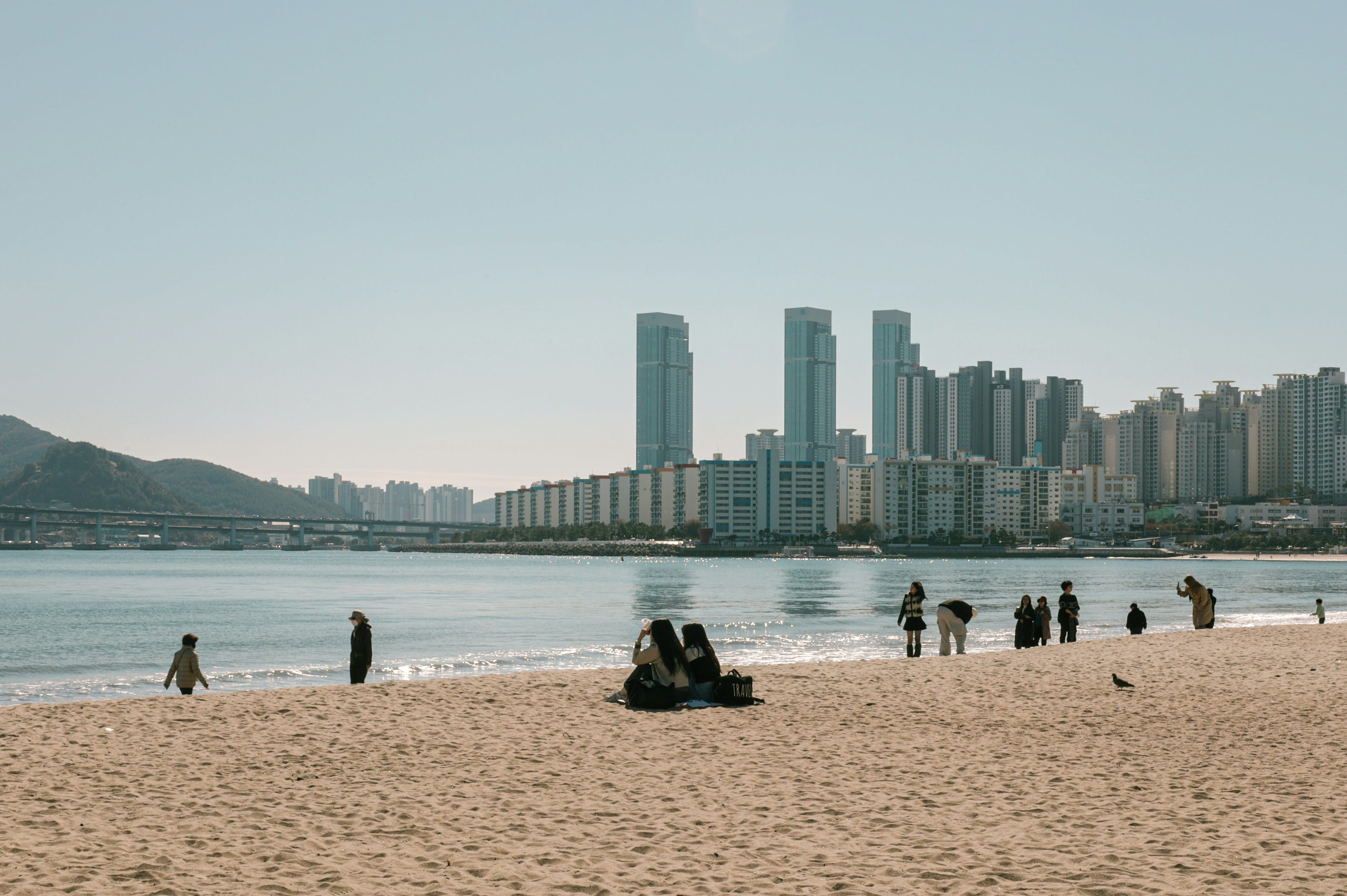
Before visiting South Korea, I never expected it to be a country with notable beaches, but I was pleasantly surprised by the diverse and stunning coastal experiences it offers. From the expansive, swim-friendly shores on the east coast to the hidden gems sprinkled along the southern islands and the lively beach festivals on the west coast, South Korea truly has a beach for every type of traveller.
The east coast beaches are phenomenal for swimming and sunbathing, thanks to their broad, sandy stretches and clear waters. Places like Yangyang not only provide excellent surfing opportunities but also a laid-back vibe that’s perfect for a summer getaway. Meanwhile, the southern coast captivated me with its incredible island landscapes and clear waters, making places like Jeju and Udo Island unforgettable spots for those seeking a tropical escape.
While the beaches on the western coast may not be ideal for swimming due to their rocky and muddy nature, vibrant festivals like the Boryeong Mud Festival provide unique cultural experiences that are not to be missed. The lively atmosphere and rich local traditions make for a compelling visit.
All in all, South Korea’s beaches were a revelation to me, offering everything from peaceful retreats to festive gatherings. Whether you’re looking to catch the first sunrise of the new year, ride the perfect wave, or soak in a mud bath among new friends, South Korea’s coastlines offer a wealth of stunning and diverse beach experiences. It’s a great country to visit for a beach holiday, and I’m already looking forward to my next coastal adventure here.
